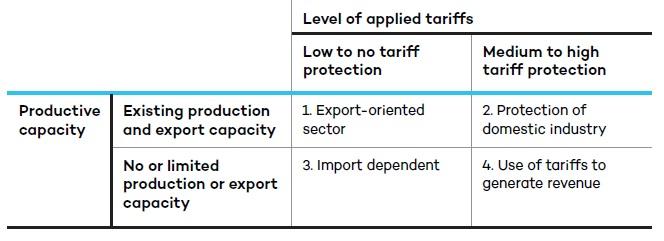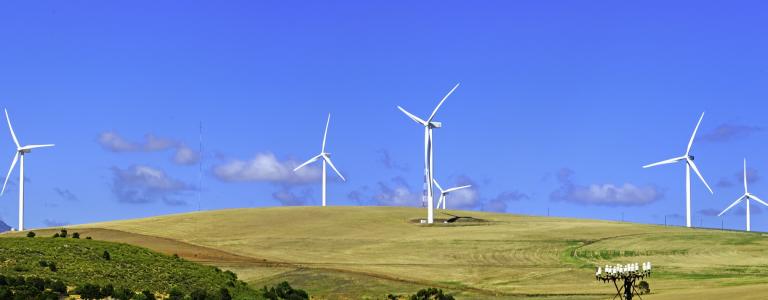How Can Trade Maximize Gains From Clean Energy Investment in Developing Countries?
As governments increasingly turn to trade policy to support the renewable energy transition, they also need to encourage the production of key components at home.
The growth of renewable energy is the most significant development in the global electricity market over the last two decades. Costs have reached a point where renewable energy can legitimately compete with traditional energy in almost all countries.
Given the recent boom in the construction of clean energy projects, national governments are now increasingly keen to ensure that these projects create domestic employment and industrial development opportunities. In recent years, they have used a range of instruments, including trade policy restrictions—such as local content requirements or import tariffs—to incentivize domestic production.
National governments are now increasingly keen to ensure that clean energy projects create domestic employment and industrial development opportunities.
While these restrictions may, under certain circumstances, play a role in stimulating local capacity to produce clean energy components, they also tend to increase project costs and prices for consumers, which in turn may delay the renewable energy transition. A new paper by IISD helps governments determine how to strike a balance between maximizing local benefits and minimizing project costs through trade policy with a particular focus on wind and solar energy in developing countries.
Wind and solar projects typically involve a mix of very specialized components manufactured in a small number of places at very large scales, along with components that are produced in many countries and everything in between. For wind energy, generators, transformers, nacelles, and rotors are likely to be procured from global manufacturers, whereas blades, foundation, cabling, and civil work can be procured and built locally. In the case of solar panels, solar modules and inverters are likely to be procured from global manufacturers, whereas the structures and electrical components—including wiring, protection equipment, and civil work—can be procured and built locally.
In practice, most low-income and lower-middle-income countries are net importers of wind and solar components. Among the top 30 leading exporters of solar components, only eight have a trade surplus, while 22 are net importers. This is even more marked in the wind sector, where only two countries export more than they import.
In terms of trade protection, it is noteworthy that average tariffs on solar modules (3.8%) and inverters (5.4%) are significantly lower than the ones applied to structure (15.8%) and electrical components (12.4%). This seems consistent with the finding that solar modules need to be sourced globally, and, therefore, lower tariff levels would help ensure they are accessible to businesses.
Similarly, in the case of wind, average tariffs on wind turbines (4.1%), which are generally sourced internationally, are lower than those applied to wind towers (12.4%), which can be produced locally. They are, however, only marginally lower than those on transformers (6.9%), which could also arguably be produced domestically.
Bottom line: the average tariff structure of low-income and lower-middle-income countries only partially reflects the extent to which specific components are expected to be sourced internationally or locally. This is explained by other factors. Figure 1 represents a rough typology of different trade policy settings observed in practice depending on domestic productive capacity and tariff levels.
Table 1. Trade policy objectives: The productive capacity and applied tariffs matrix

In short, the imposition of tariffs may stimulate the deployment of additional productive capacity, particularly for products that are suited to local production. A good example is the production of heavy or bulky components such as towers, for which minimizing transport distances provides a cost advantage. In these cases, however, there is a need to balance the likelihood of achieving competitive production with increased project cost and the economic value of local production.
International initiatives that liberalize environmental goods and services could reduce costs and increase renewable energy deployment.
By contrast, the overall impact of tariffs on highly centralized components is very likely to be negative and reduce the deployment of renewable energy. In these cases, the barriers to entry for new manufacturers are so high that tariffs will only increase costs without fostering local production. For moderately centralized components (such as wind turbine blades), the results are strongly case dependent.
International initiatives that liberalize environmental goods and services could reduce costs and increase renewable energy deployment. However, considering what precedes, countries’ interests in liberalizing trade in equipment for wind and solar energy generation will vary depending on their productive capacity, trade policy settings, and export destinations (see Figure 1).
Figure 1. Policy options and considerations regarding tariffs on renewable energy equipment

As international initiatives are pushed forward, the opportunities for liberalizing environmental goods and services should be accompanied by policies that support the competitive local production of components to help build the political and economic cases for a transition to renewable energy. This may call for allowing exceptions for some of these components as part of a list of sensitive items under either regional or plurilateral initiatives.
You might also be interested in
How Can Trade Policy Maximize Benefits From Clean Energy Investment?
This paper looks at the role of trade policy in fostering the domestic production of renewable energy components in developing countries with a particular focus on wind and solar energy.
Driving Demand: Assessing the impacts and opportunities of the electric vehicle revolution on cobalt and lithium raw material production and trade
This report assesses the impacts and opportunities of the electric vehicle revolution on cobalt and lithium raw material production and trade, with a focus on Chile and Congo DRC
Enabling Climate Ambition: Border carbon adjustment in Canada and abroad
BCA is devilishly complex, politically explosive, potentially illegal under trade rules, and would have to be adapted to Canada’s unique climate pricing regime. So policy-makers need to start thinking now about what such a regime might look like here.
Canada Must Reconcile Climate Action and International Trade
A new report is the first to examine in detail the kinds of questions Canada will have to answer as it designs a BCA regime.
